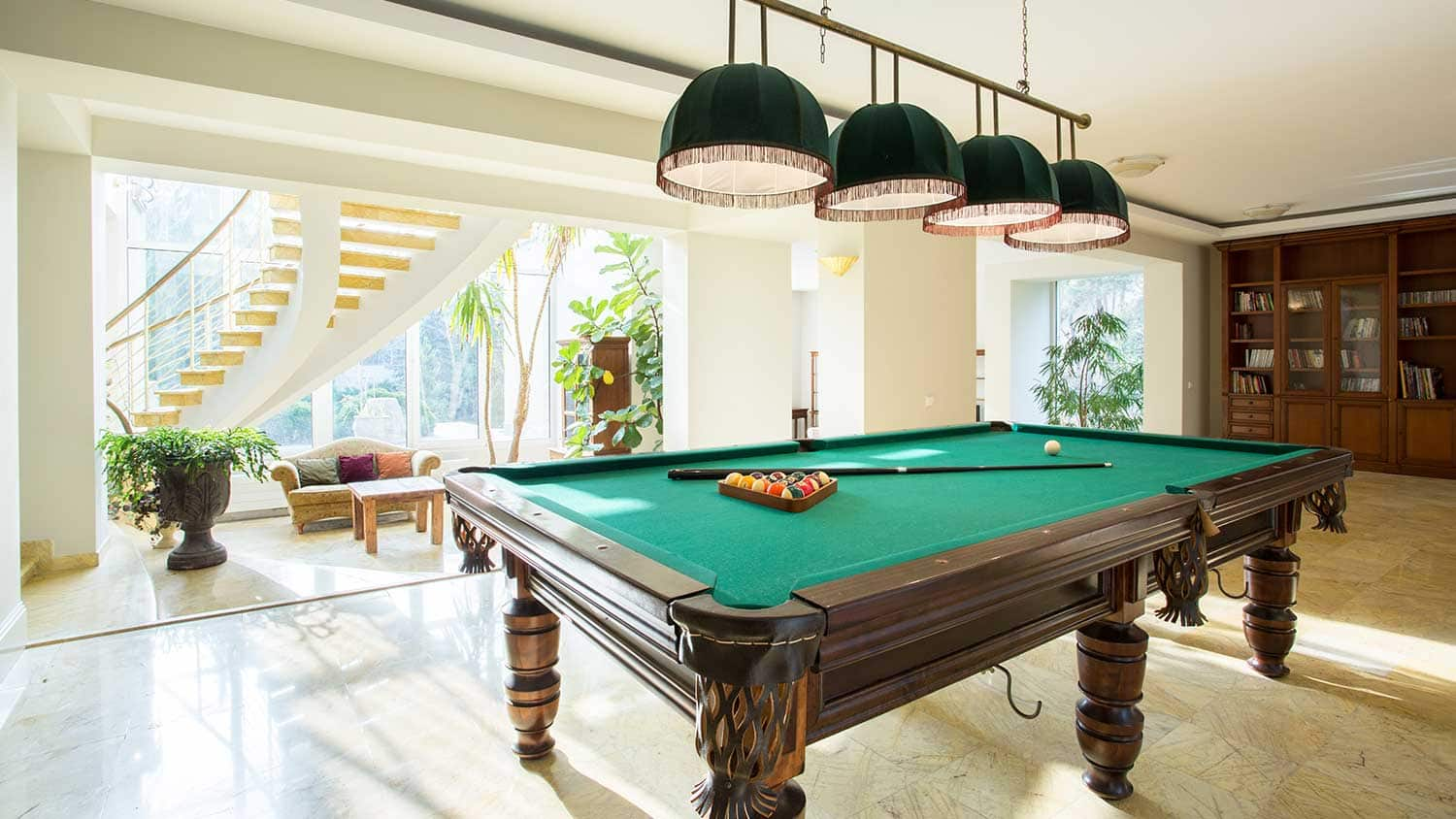The common pool table, which is sometimes confined to game rooms and basements, has surprisingly great potential as the focal point of interior design and creative expression. It’s not just about aesthetics that this piece has transformed from a recreational mainstay to a statement piece; it’s also about incorporating creativity, craftsmanship, and culture into regular living areas. We’ll look at how they’ve changed from their conventional duties in this blog post, as well as how they might improve and modernise spaces.
The Historical and Cultural Significance
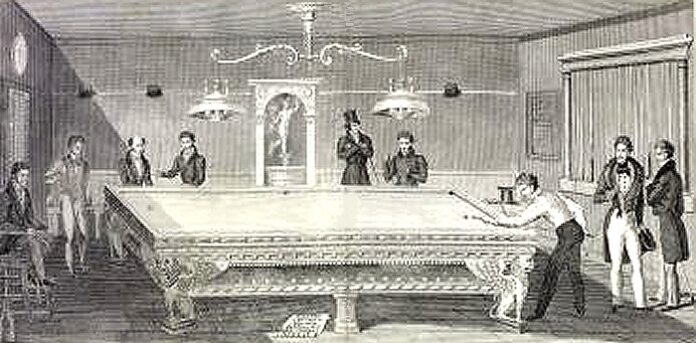
Originally a grass game akin to croquet, pool tables were played by the elite during the reign of Louis XI of France in the 15th century, and their history is rich. Eventually, this game made its way indoors and underwent a number of changes before arriving at the pool tables we know today. In the past, pool tables had elaborate furnishings with intricate woodwork framing them, and basic stone or later slate covered in cloth as the surface.
These details reflected the era’s design ideas. These historical origins provide a rich tapestry of design components from which contemporary decorators might draw to create a striking artistic statement.
They have served as more than just a place to relax over the ages. They have been a social status symbol, appearing in both public halls and the private parlours of the wealthy and well-to-do. Its dual nature, which embodies a fusion of class, culture, and history, gives it additional depth in its role as a focal point in space design. Designers can express these cultural elements by incorporating them into a setting, adding layers of significance that go beyond simple aesthetics.
Modern Art
Modern pool tables combine classic design elements with cutting-edge technology, providing a variety of styles to complement any home decor theme. Modern materials like tempered glass, acrylic, and repurposed wood have been used by designers to reimagine them; occasionally, LED lights and touch technologies have even been added.
This invention not only gives a time-honored game a fresh new lease on life, but it also turns these tables into custom works of art that may highlight or anchor the design of a space.
The personalisation of artwork is what gives it its true beauty. Craftsmen may customise every element, including the felt colour and wood stain, to match the concept of the room and the homeowner’s personal style. Each table becomes a unique work of utilitarian art and a statement piece of the owner’s individuality through the use of intricate inlays, handmade carvings, and distinctive finishes
Integrating into Home Decor
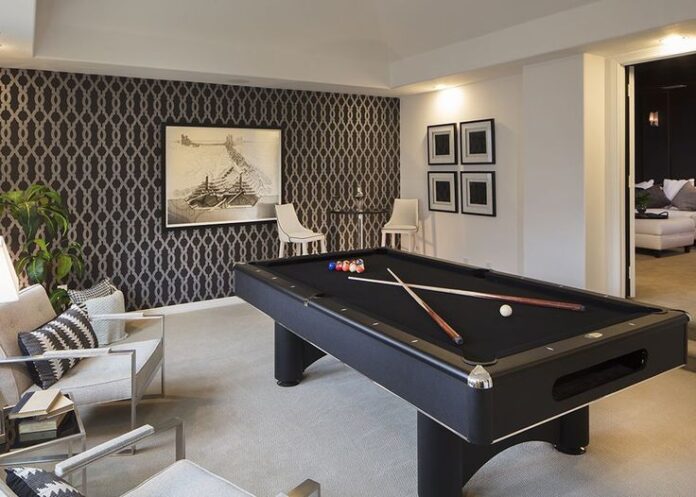
Integrating stylish pool tables into home decor is about more than just finding space; it’s about creating harmony within the home’s aesthetic. Whether the table is placed in a dedicated game room, a basement, or as a striking addition to a living room, its placement should complement the overall flow and design of the house.
Lighting, seating, and accessory furnishings should enhance the table’s visibility and functionality, turning it into a pivotal design element.
The aesthetic should go in well with the current decor of the house. A sleek, modern table with neutral colours and clean lines is perfect for minimalistic interiors. On the other hand, a home with a traditional or rustic feel would benefit most from a beautifully stained wood table.
It can also act as a starting point for the theme of a space, providing ideas for wall art, colour palettes, and lighting fixtures that all work together to create a unified and welcoming ambiance.
The Art of Craftsmanship
The craftsmanship can be a profound expression of artistry. From the precision of its slate to the hand-stitched leather pockets and the meticulous application of the felt, every detail counts. The skills required to craft such a table have been honed over generations.
Each table not only serves as a playable surface but also stands as a testament to the woodworker’s and artisan’s expertise, making it a piece to treasure for years to come.
In a world increasingly attuned to sustainability, the art of crafting aligns well with eco-friendly practices. Many modern craftsmen prioritize materials like reclaimed wood or sustainably sourced hardwoods, which not only reduce environmental impact but also add a story of conservation and consciousness to the piece.
This commitment to sustainability can enhance the artistic value of the table, aligning with a broader narrative of environmental stewardship and sustainable living.
Blending Functionality with Aesthetics
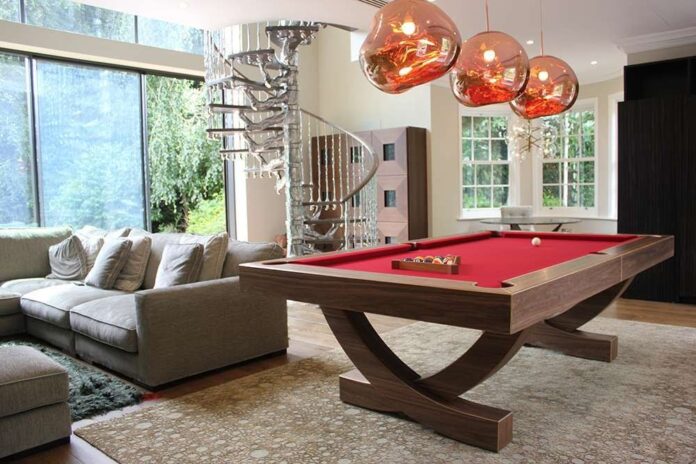
When selecting them as a decorative element, functionality must not be overshadowed by aesthetics. The table should not only fit seamlessly into the room’s theme but also remain fully usable for its intended purpose — playing pool.
This requires careful consideration of the room’s dimensions, ensuring there’s adequate cue space around the table, and selecting a table size that balances playability with the room’s scale. Thus, a well-planned pool table is both a functional sporting good and a piece of art.
The challenge of incorporating it into your home decor is finding the balance between its artistic elements and practical utility. A table too ornate might detract from its playability, whereas one too simple may not stand out as an artistic statement.
Choosing the right design involves considering the frequency of use and its importance as a focal point in the room. This balance ensures that the desk enhances the living space without compromising its functionality.
Enhancing Interiors
They can be crafted to fit specific themes, further enhancing their impact as artistic statements. For instance, a nautical-themed room might feature a table with navy blue felt and rope-like trimmings, or a sports enthusiast’s room could include a table adorned with team logos and colors. These theme-driven designs can act as a centerpiece that ties other elements of the room together, creating a cohesive and immersive environment.
Conclusion
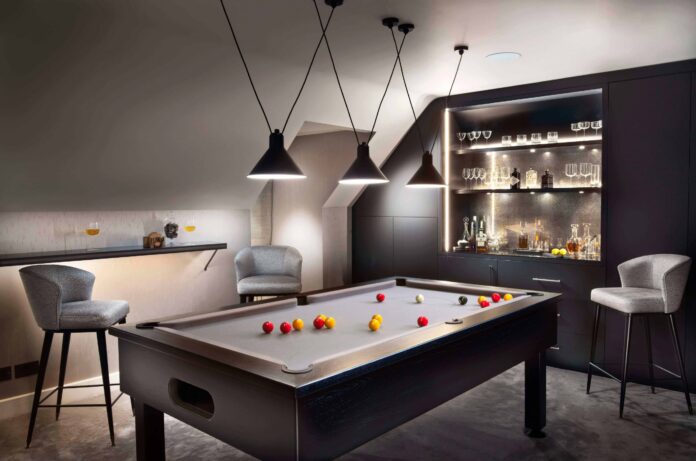
From game room to showroom, pool tables offer a unique opportunity to make a bold artistic statement in any home. Whether through historical reverence, modern innovation, or meticulous craftsmanship, these desks transcend their recreational origins to become central elements of interior design.
By understanding and embracing the potential of pool tables as both art and furniture, designers and homeowners alike can elevate their spaces in ways that are both visually striking and richly meaningful.

